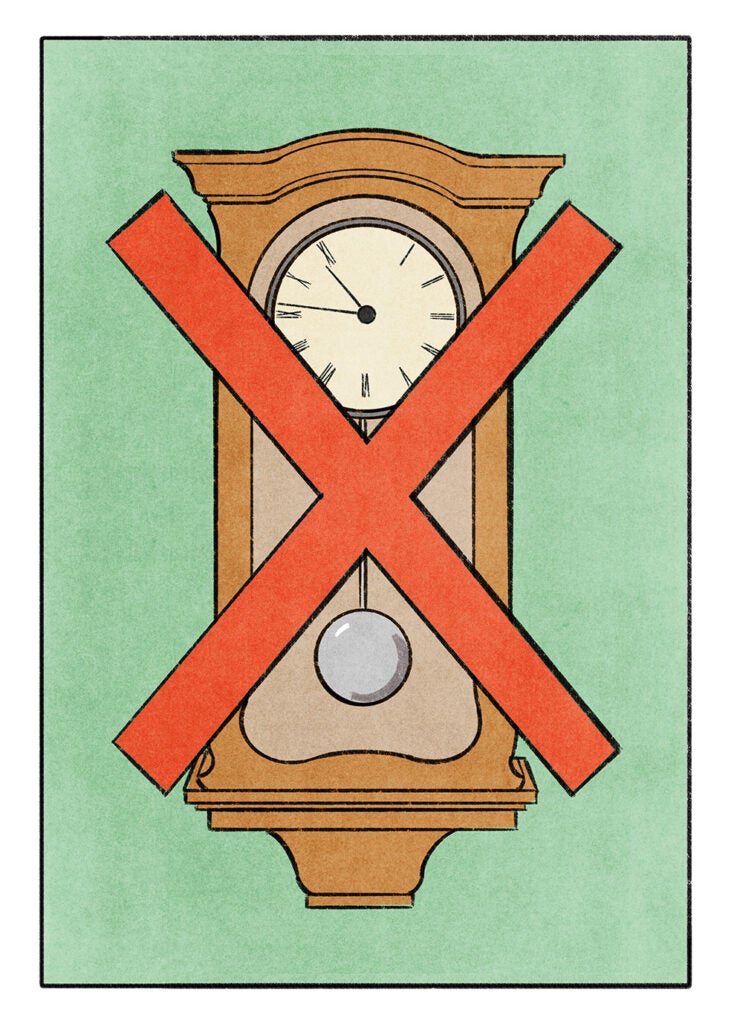Navigating Generational Divides: How To Recruit and Retain the Next Generation of Workers
There seems to have been a generational shift in the way people approach their careers and the way they map their paths to leading the work lives they want. LaJwanne Louis (B’04), who has spent a career working to attract top talent to companies and organizations like LBrands, WeWork, and now WPP, a London-based network of advertising and creative agencies, puts it this way: “What got me here will not necessarily get someone who is entering the workforce 20 years after me to the same spot.”
Perhaps more important: This next generation of workers may not be interested in walking that same road at all. So how do we manage the expectations of early career talent, while also maintaining the way of working current leaders have spent years perfecting?
Here, our experts share tips for management to help not just recruit — but retain — top talent in today’s working world.
One size does not fit all.
Companies need to get creative with benefits to attract top talent. In the past, employers touted childcare benefits, parental leave, and fertility support — which only resonate with a subset of employees. “Employers eventually had to ask: What are we missing?” says Louis. Some companies have created competitive benefit offerings by including mental health benefits, enhanced support for elder care, unlimited PTO, and even pet care benefits.
Irena Djordjevic Behery (EML’16), head of talent management and learning at the digital care company Amwell, says her organization works to provide a robust suite of benefit and well-being programs to support the total being of each employee, inclusive of many traditional benefits, as well as free access to the company’s virtual care app and a free subscription to the Calm app to support employee mental health.
All of this is not to say companies should all start offering care for everyone’s dog and weekly massage appointments, but it does mean we need to think differently about what benefits might attract top talent and perhaps more importantly, create flexible paths for managers to offer nontraditional benefits.
Feedback is a gift.
The more you give employees the opportunity to provide feedback, the better you become. Allow employees to weigh in on company policies, benefits, and employee value propositions.
“Almost every large company has an annual engagement survey, and almost every large company uses a ‘strongly agree to strongly disagree’ scale,” says Louis. But consider also asking for narrative feedback for further context. “When I assess surveys, I look at the data, but I pay much closer attention to the narrative responses. This is where we can see everyday, concrete examples of issues that directly affect employees.”
And remember, collecting the feedback is just a start — these surveys are really about listening to employees, and reacting and acting to that feedback to proactively determine and transparently communicate the insights to their employees. Behrey’s company, Amwell, also offers mental health days, no questions asked, as well as unlimited PTO. Where did they get the ideas for all of these incentives? Their employees.
Change is constant.
Anybody who expects the world of work to remain the same will be out of business quickly. Change will come, and adaptability is key. As a leader, it’s important to challenge your own thinking in order to grow your company and your talent pool.
“It’s not only about being comfortable with change; the key is to proactively leverage that change to power innovation and growth,” says Behery. “If a leader understands where the business is going, that leader can weather the change and help people succeed through it and beyond. Leaders must also accept that change is an iterative process, requiring constant attention.”

Ban the phrase “back in our day.”
“Every generation thinks the one after them is lazy,” says Mike Galetto (MBA’03), vice president of talent at Tide Rock, “but when people say a generation is soft or disloyal, I think that’s inaccurate.” Every generation has to start somewhere. “Management needs to remember their youngest workers are now functioning for the first time outside of a controlled environment like school and home.”
One tip from our experts: Either informal mentors or a formal mentoring program can help guide young workers through those first few formative years. It would do managers well to also keep in mind that approaches to work vary and can align with cultural changes outside of the work world.
The information generations.
Previous generations of potential employees relied on job postings, want ads, and eventually primitive and limited websites to gather company information. Workers of younger generations today are bombarded with information, including the salaries of the CEOs at public entities. All of that data means they can — and want — to make more informed choices about the organizations for which they work. Couple that with the fact that the constant dinging of emails and messages means their work lives poke into their private lives more frequently. The result: They consider their work a part of their identities in ways previous generations may not have.
“Companies are thinking more in terms of stakeholder capitalism — the idea that the company is part of a broader community,” says Galetto, who specializes in executive search. “These days, there are many additional stakeholders — employees, customers — in addition to shareholders.”
And if values between their company and their personal life don’t align, these new employee stakeholders are willing to jump ship. “This doesn’t mean younger generations are more disloyal,” Galetto says. “They just have access to much more information.” While their grandfathers may have joined companies in their 20s and retired from the same companies in their 60s, the “information generations” have much larger opportunities to shop around for the right fit.
A diverse company is not necessarily an inclusive company.
Being inclusive is more than representation. The real question to ask is: do your employees recommend your company to others like themselves as a great place to work? Do people feel like they belong, and can they thrive within the work environment?
“The focus shouldn’t be on hiring. It should be on employee engagement, retention, and promotion following hiring,” says Louis. “It’s not just about numbers, it’s about ensuring that your workforce is seen, heard, thriving, growing, and developing so they can then go on to become ambassadors for your organization.”
The elephant in the room: remote work.

Some leaders believe face time matters, being in the room matters, walking the halls and having those informal elevator and water cooler conversations matter. But many employees entering the workforce who have had flexible college courses and went through COVID believe they can do good work without those elements. The solution, say our experts, likely lies somewhere in the middle and a key word to keep in mind is flexibility.
The truth is, there are pros — and cons — to both working environments. “You might want to work from the moon, but how might that limit you over the long term when you’ll lack the relationships and networks that in-office peers developed while you were working remotely?” asks Louis. “On the other hand, what kind of talent do you lose when remote work isn’t an option at your company, but is a viable option elsewhere?”
The key word here is flexibility, says Behery: “Today’s employees are looking for the workplace that offers flexibility and creates an environment for every employee where they can be at their best, deliver their best. For some, that’s in the office, for some that’s remote, and for some — that’s anywhere in between.”
Louis puts it this way: “As an employer you have to say, ‘You’re talented, so I’m going to meet you where you are, and I hope that you can learn a little bit from me, and I hope I can learn a little bit from you.’”
Believe it or not, not everyone wants to be the CEO.
We all have different aspirations, paths, and goals in our lives and careers. The American Dream once included a mortgage, but now people are asking: “Why would I want to be tied down by a mortgage in one city when I can Airbnb my life and travel? It’s a different way of living with different aspirations,” says Louis. “For people with this mindset, jobs are more akin to gigs rather than steps along a career journey.”
In short: Not everybody wants to be in the C-suite. Behery backs up that sentiment urging leaders to remember that everyone is on an individual journey. It’s important, she says, for leaders to acknowledge and appreciate each individual on their team for their unique values, qualities, and contributions. “Taking the time to get to know your people, their motivations, and their aspirations, enables leaders to position their people and the team for success,” she says.
– Maureen Harmon
This story was originally featured in the Georgetown Business Spring 2024 Magazine. Download the Georgetown Business Audio app to listen to the stories and other bonus content.
